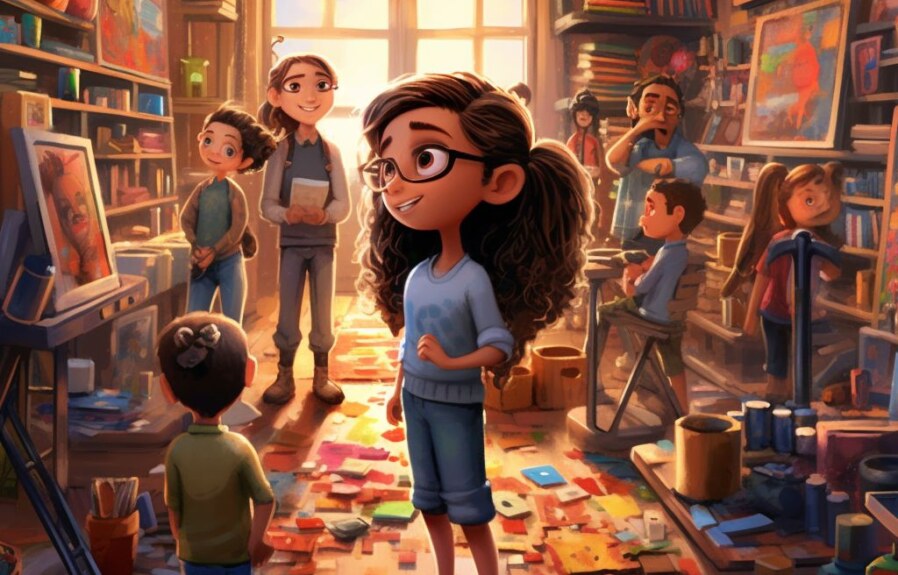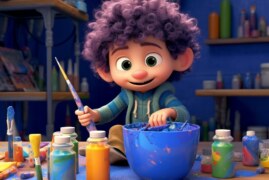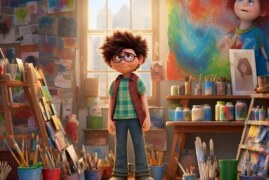If you’re interested in drawing and want to learn how to sketch, you’re in the right place. Sketching is a fundamental skill for artists and designers alike – it helps us communicate ideas, capture moments, and develop our creativity. Whether you’re a beginner or a seasoned artist, this article will guide you through the basics of sketching so you can bolster your skills, express your creativity, and learn how to bring your ideas to life. So grab your pencil and paper, and let’s get started!
1. Step-by-Step Guide: How to Sketch Like a Pro
Sketching is a great way to express your creativity and imagination. Whether you are a beginner or an experienced artist, this step-by-step guide will help you improve your sketching skills and draw like a pro. With the right tools, techniques and a little bit of practice, you can create amazing sketches in no time.
1. Start with the basics
The first step to sketching like a pro is to master the basics. This includes understanding light and shadow, perspective, and proportion. Take the time to study these concepts and practice them regularly. Start by sketching simple objects and gradually move on to more complex subjects.
2. Use the right tools
Invest in good quality sketching pencils, erasers, and paper. Sketching pencils range from soft to hard, and each has its own unique properties. Play around with different types of pencils to see which ones work best for you. Erasers are also important tools for sketching, as they allow you to correct mistakes and refine your drawings. Look for erasers that are gentle on paper, such as kneaded erasers or vinyl erasers. Finally, choose the right paper for your sketches. Sketching paper is available in different textures and weights, and each can produce a different effect.
3. Practice regularly
The key to improving your sketching skills is to practice regularly. Set aside some time each day to sketch, even if it’s only for a few minutes. Sketch from life whenever possible, as this will help you develop your observational skills. Don’t be afraid to make mistakes or experiment with different techniques. The more you practice, the better you will become.
2. The Essential Materials You Need for Sketching
Sketching is an art form that allows you to express yourself creatively, and you only need a few essential materials to begin. These materials are not expensive, and you can purchase them at any art supply store or online.
Here are :
1. Pencils – A set of pencils ranging from 2B to 8B will give you the range of shading that you need. A 2H pencil is also useful for lighter lines or fine details.
2. Sketchbook – A sketchbook is where you can practice your drawing skills and try out different techniques. Choose a sketchbook with good quality paper that can handle different media, and with a size that you are comfortable with.
3. Eraser – An eraser will help you correct mistakes or lighten lines if you need to. There are different types of erasers, but a kneaded eraser or a white plastic eraser will do the job.
4. Sharpener – A sharpener will help you maintain a sharp point on your pencils. Choose a manual sharpener that can accommodate the size of your pencils, or an electric sharpener for convenience.
5. Optional materials – Depending on your preference or the subject matter that you want to sketch, you can also add the following materials: charcoal, pastels, pen and ink, markers, or watercolor pencils.
Sketching is a relaxing and rewarding activity that you can do anytime and anywhere. With these essential materials, you can start sketching and see where your creativity takes you.
3. Mastering the Basic Techniques for Sketching: Shading, Perspective, and Proportion
Sketching is a fundamental skill for artists, allowing them to capture their ideas quickly and efficiently. However, to create lifelike sketches, mastering fundamental techniques is essential. In this section, we will explore several basic techniques for sketching, including shading, perspective, and proportion.
Shading is a crucial element of sketching, adding depth and texture to drawings. By using different grades of pencils, you can create shadows and highlights to add depth and dimension to your sketches. One of the best ways to improve your shading skills is to practice using a variety of pencils, from light to dark, and experiment with different shading techniques such as cross-hatching and stippling.
Perspective is another critical technique in sketching, helping you to create a sense of depth and space in your drawings. Perspective is all about creating the illusion of distance and space on a two-dimensional surface. There are several types of perspective, including one-point, two-point, and three-point perspective. By mastering these techniques, you’ll be able to give your sketches a realistic sense of space and dimension.
Finally, mastering proportion is essential for creating lifelike sketches. It’s all about understanding the relationships between different parts of the body or objects and ensuring they are correct in relation to one another. To improve your proportion skills, it’s essential to practice using reference images and measuring tools, such as a pencil or your thumb. By taking your time and continuously practicing these essential techniques, you’ll be well on your way to mastering the art of sketching.
4. Tips and Tricks for Sketching Portraits Like a Pro
Sketching portraits can be a challenging task, but with a few tips and tricks, you can become a pro in no time! Here are some helpful pointers to keep in mind when sketching portraits:
– Start with the basic shapes: Begin with rough outlines of the basic shapes of the head, such as the skull, jawline, and neck. This will help you get the proportions right before moving on to the details.
– Practice your shading: Shading is essential for giving your portrait depth and dimension. Experiment with different pencils and techniques to find what works best for you.
– Capture the eyes: The eyes are often the focal point of a portrait, so make sure to pay extra attention to them. Try to capture their shape, size, and expression accurately.
– Don’t be afraid of mistakes: Remember that sketching is a learning process, and mistakes are a natural part of it. Embrace your mistakes and learn from them to improve your skills.
– Use reference photos: Reference photos can be a great tool for practicing your portrait skills. Look for images with clear lighting and angles to help you capture the subject’s likeness accurately.
By keeping these tips and tricks in mind, you’ll be well on your way to sketching portraits like a pro. Remember to practice regularly and have fun with your drawings!
5. How to Develop Your Own Style and Creative Vision in Sketching
Developing your own style and creative vision in sketching is an essential skill that sets you apart from other artists. Here are some tips to help you develop your personal style in sketching:
1. Experiment with different mediums: Sketching is not only limited to pencils and paper. Feel free to explore and try out different mediums, such as pen and ink, watercolors, charcoal, or digital tools. Different mediums offer unique textures, colors, and line qualities that can help you develop your personal style.
2. Draw what you love: Drawing something that you’re passionate about will bring out your creativity and style. Sketch what interests you the most, whether it’s nature, people, or abstract concepts. You’ll be more likely to develop a personal style when you love what you’re drawing.
3. Practice regularly: The more you practice sketching, the more you’ll develop your own style. Set aside time every day or a few times a week to sketch. It’s not about producing a finished work every time but rather about building your skills and developing your creative vision.
4. Analyze other artists’ work: Look at other artists’ work and identify what you like and don’t like about their style. Use that as inspiration and incorporate it into your own style.
5. Take risks: Don’t be afraid to make mistakes or try something new. Taking risks can lead to discoveries that help develop your personal style.
Remember, developing your own style takes time and patience. Keep practicing, experimenting and pushing yourself creatively, and you’ll eventually cultivate a unique style that reflects your artistic vision.
6. Sketching Exercises to Improve Your Skill and Boost Your Creativity
Sketching is a valuable technique to improve not only your drawing skills but also your creativity. Whether you are a beginner or a professional artist, incorporating sketching exercises into your routine can help you develop your artistic abilities and produce more interesting and unique artwork. Here are some sketching exercises to try out:
1. Blind Contour Drawing: This exercise consists of drawing an object in front of you without looking at your paper. By focusing on the contours of the object and letting your hand follow the movement of your eyes, you can improve your hand and eye coordination and learn to see things differently.
2. Gesture Drawing: Gesture drawing involves drawing the basic shapes and lines of a subject quickly and with a loose hand. This exercise can help you capture the essence and movement of the subject and express it in a more dynamic way.
3. Still Life Drawing: Drawing from a still life arrangement can help you practice composition, perspective, and lighting. It’s also a great exercise for building patience and attention to detail.
4. Sketching from Imagination: Let your creativity run wild by creating drawings entirely from your imagination. This exercise can help improve your ability to visualize and problem solve, in addition to enhancing your creative thinking.
By incorporating these sketching exercises into your routine, you can improve your artistic abilities and gain a fresh perspective on your artwork. Don’t forget to have fun with it and let your creativity shine!
7. Sketching Challenges: Pushing Your Limits and Breaking Free from Your Comfort Zone
Sketching is a fulfilling hobby, but it can also become stagnant and predictable. To keep the passion and excitement alive, you need to challenge yourself and break free from your comfort zone. Here are some sketching challenges you can undertake to push your limits and break free from your creative rut.
1. Draw Something You’ve Never Drawn Before: Challenge yourself to draw something you’ve never attempted before. It could be an animal, a building or a landscape. You’ll learn something new and improve your skills in the process.
2. Practice Blind Contour Sketching: Blind contour sketching involves drawing an object without lifting your pencil from the paper or looking at the paper while doing it. Although it may seem counterintuitive, this technique can help you observe shapes, angles, and curves more accurately.
3. Use a Limited Palette: Limit yourself to just two or three colors for a piece. Working with a limited color scheme means you need to be more creative with color choices and focus on value and form to convey depth and texture.
4. Draw with a Time Limit: Set a timer and challenge yourself to complete a drawing within a specific timeframe, whether it’s 10, 20, or 30 minutes. This exercise helps you to focus on what’s important and prioritize what to include in the drawing.
5. Combine Realism with Surrealism: Combine realistic elements with surreal elements to create a unique drawing. Pushing yourself to combine opposite concepts will bring a new dimension to your creativity.
By taking on these sketching challenges, you can hone your skills, diversity your portfolio, and break free from your comfort zone. Have fun exploring and unleashing your creativity!
People Also Ask
1. What are the basic sketching techniques?
The basic sketching techniques include contour drawing, shading, hatching, cross-hatching, stippling, and scribbling.
2. How can I improve my sketching skills?
You can improve your sketching skills by practicing regularly, experimenting with different tools and techniques, learning proportions and anatomy, studying and observing other artists’ work, and seeking feedback from others.
3. What are the best tools for sketching?
The best tools for sketching depend on personal preference and artistic style, but some popular options include pencils (graphite or charcoal), pen and ink, markers, and colored pencils.
4. Is it necessary to be good at drawing to sketch?
No, it is not necessary to be good at drawing to sketch. Sketching is a form of expression and can be done by anyone regardless of their skill level.
5. Can you learn sketching on your own?
Yes, you can learn sketching on your own through books, online tutorials, and practicing regularly. However, taking a class or workshop may also be helpful to receive feedback and guidance from a professional.
Final Words
Sketching is a wonderful way to express your creativity and can be done by anyone regardless of their skill level. By practicing regularly and experimenting with different tools and techniques, you can improve your sketching skills and create beautiful and unique works of art. Remember to never give up and have fun with your creations!



